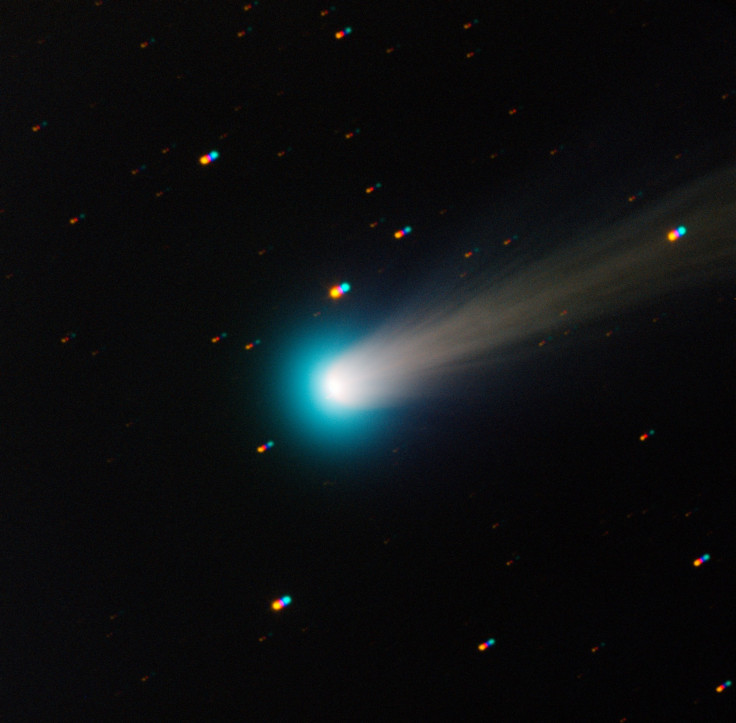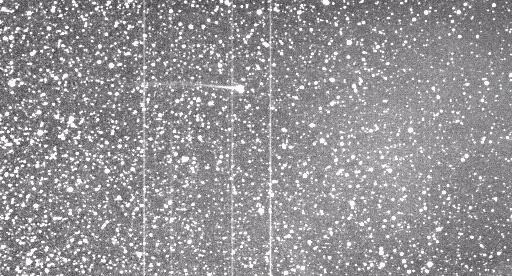Comet ISON’s Dangerous Trip Around The Sun: A Solar Storm Collision Could Confront The ‘Comet Of The Century’

Nov. 28, the date that astronomers and researchers have circled on their calendar since C/2012 ST was first discovered, is almost here and we will soon know the fate of Comet ISON. The "comet of the century" has excited, then disappointed, and once again, excited astronomers, but its fate is tied to a dangerously close orbit around the sun that could be made even worse: Comet ISON could be flying head-first into a major solar storm.
Such was the fate of Comet Encke, NASA reports, when it met a solar storm in its trip around the sun in 2007. Encke’s tail was torn away after the comet was hit by a coronal mass ejection (CME), a magnetized cloud of plasma that escapes the sun’s gravitational pull. In a gif of the event, the comet’s long tail disappears as a CME wave collides with Encke, leaving scientists “speechless” as they witnessed the destruction.

There are two factors that significantly increase the risk for ISON. As NASA points out, Encke was hit by a CME during Solar Minimum, a period of decreased solar activity, as it entered the orbit of Mercury.
ISON, by comparison, is rushing toward the sun during Solar Maximum, the period of increased solar activity. The sun has been plenty busy over the past month: Several X-class solar flares have erupted, with multiple outbursts occurring on the same day, as well as reports of CME associated with those solar flares. The increased level of activity occurred earlier in November, but there was a X-class solar flare that was observed on Nov. 29, with two M-class solar flares observed on Nov. 23. ISON will also travel much closer to the sun; its orbit sees the comet passing just 745,645 miles, 1.2 million kilometers, from the surface of the sun.
A solar storm possibly wiping out ISON just adds another element of danger to the comet’s trip around the sun. There were fears that ISON would break apart, ruining the chance to see the comet in broad daylight with the naked eye from Earth. Even if ISON disintegrated, the comet would be a boon for researchers. It is billions of years old and could give a glimpse of the early universe.
Some researchers are excited about ISON’s destruction as the event would provide new insight on comet tail interactions in space. Karl Battams, an astronomer from the Naval Research Lab, said in a statement, "It won't hurt the comet, but it would give us a chance to study extreme interactions with the comet's tail.”
A CME encounter won’t destroy ISON, but researchers are unsure what would actually happen if a comet hits a faster-moving wave. Angelos Vourlidas, from the Naval Research Lab and member of NASA’s Comet ISON Observing Campaign, said in a statement, “Any CME that hits Comet ISON close to the sun would very likely be faster, driving a shock wave with a much stronger magnetic field. Frankly, we can't predict what would happen.”
ISON will orbit the sun’s equator on Nov. 28, and NASA notes it will cross an area of active sunspots.
© Copyright IBTimes 2024. All rights reserved.






















